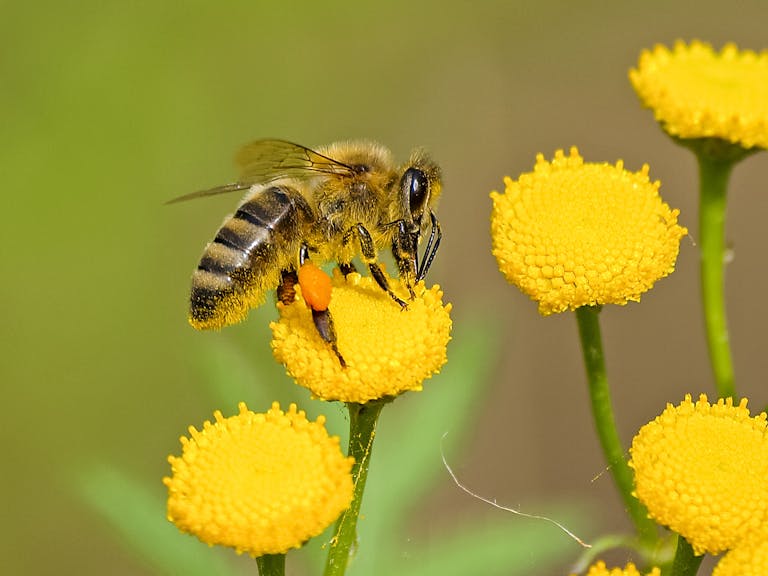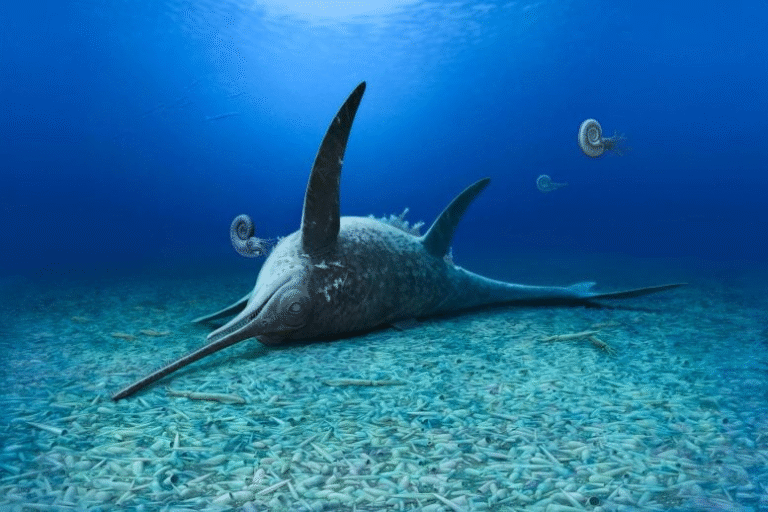The Atlas Blue Butterfly Holds the Record for the Most Chromosomes on Earth

The world of butterflies has just given us an incredible surprise. Scientists have confirmed that the Atlas blue butterfly (Polyommatus atlantica) has the highest number of chromosomes ever recorded in a multicellular animal. This species, found in the mountain ranges of Morocco and northeast Algeria, carries a staggering 229 pairs of chromosomes—that’s 458 chromosomes in total. For context, humans only have 23 pairs.
This groundbreaking discovery was made possible thanks to researchers from the Wellcome Sanger Institute in the UK and the Institute of Evolutionary Biology (IBE: CSIC-UPF) in Barcelona, who produced the first complete genome sequence of this butterfly. The findings, published in Current Biology in September 2025, do much more than add a new record to the books. They shed light on how genomes evolve, how species adapt to their environments, and even provide clues that could help researchers understand human diseases like cancer.
Breaking the Chromosome Record
When scientists compared the Atlas blue butterfly’s genome to that of its relatives, they found something astonishing. Most closely related species—such as the Common blue butterfly found across the UK—have only about 24 chromosomes. In contrast, the Atlas blue butterfly has 229 pairs. That’s nearly ten times more than what you’d expect from a butterfly in the same family.
So how did this happen? At first glance, one might think such a massive increase could be the result of duplication, where entire chromosomes are copied over evolutionary time. But that’s not the case here. Instead, the team found that the Atlas blue butterfly’s chromosomes had undergone a process of fragmentation. This means that instead of duplicating, chromosomes were split into smaller pieces.
The researchers noted that this splitting tended to occur at points where DNA is less tightly wound, making those regions more prone to breakage. Over roughly three million years, an ancestral genome of just 24 chromosomes was repeatedly fragmented until the butterfly’s current total of 229 pairs was reached. Importantly, the sex chromosomes resisted this fragmentation process, staying relatively intact, while the rest of the genome split apart.
Why Doesn’t This Cause Problems?
Here’s the surprising part: having so many chromosomes isn’t necessarily harmful to the Atlas blue butterfly. Normally, extreme chromosomal rearrangements are seen as negative, often leading to instability or reduced fitness. Yet, this butterfly has managed to thrive for millions of years with its unique genome arrangement.
One possible explanation is that fragmentation could actually increase genetic diversity. With so many smaller chromosomes, the butterfly may experience more opportunities for recombination, the process where genetic material is shuffled during reproduction. This could give the species an advantage in adapting quickly to changes in its environment.
But there’s also a downside. With greater complexity comes a higher chance of errors, which could make the species more vulnerable to extinction in the long term. This delicate balance is one reason why scientists are so fascinated by the Atlas blue butterfly.
Insights Into Evolution
Chromosome numbers in animals vary widely, but the case of the Atlas blue butterfly is extreme. Typically, changes in chromosome count are thought to be important in the formation of new species, as they can create reproductive barriers between populations. In fact, the group of butterflies to which this species belongs has produced many closely related species in a relatively short evolutionary time frame.
The discovery that fragmentation, rather than duplication, drove this increase in chromosome number suggests there are different evolutionary pathways for genomic change than previously thought. This challenges the assumption that having so many chromosomes is always detrimental. Instead, it shows that under the right circumstances, it might provide advantages.
Conservation Concerns
Despite this evolutionary success story, the Atlas blue butterfly isn’t out of danger. It inhabits high mountain regions in Morocco and northeast Algeria, where its survival is increasingly threatened by climate change, deforestation, and overgrazing of the cedar forests where it lives.
Because this butterfly is now confirmed to have such a unique genome, its conservation becomes even more important. Protecting it could mean preserving one of nature’s most extraordinary genetic experiments, one that might hold answers not only for evolutionary biology but also for medical science.
The Link to Human Health
The implications of this discovery go beyond butterflies. Human cancer cells are known to undergo chromosomal rearrangements, often leading to uncontrolled growth and disease. By studying how the Atlas blue butterfly’s genome tolerates extreme fragmentation without collapsing, scientists hope to gain insights into cancer biology.
The butterfly provides a natural model system for understanding how cells manage broken and rearranged chromosomes. This could eventually point researchers toward ways of reducing or preventing similar events in human cells.
How Scientists Studied the Genome
The team used modern sequencing techniques to build a high-quality reference genome for the Atlas blue butterfly. This wasn’t just a basic genetic map—it allowed researchers to see exactly where fragmentation events had occurred, how chromosomes were packaged, and which regions resisted breakage.
Interestingly, they found that all chromosomes except the sex chromosomes had been broken up. This selective resistance might reveal something about the special roles sex chromosomes play in maintaining stability.
Butterflies and Chromosomes: A Broader Look
The Atlas blue butterfly is not the first butterfly species to display chromosome fragmentation, but it is by far the most extreme example. Other butterflies in the same genus (Polyommatus) show variation in chromosome number, though none come close to 229 pairs.
In the broader world of animals, chromosome counts vary greatly. For instance:
- Humans: 23 pairs
- Horses: 32 pairs
- Dogs: 39 pairs
- Goldfish: around 50 pairs
- Certain ferns (plants): up to 720 chromosomes (though these are polyploid, not fragmented like the butterfly)
The Atlas blue butterfly shows us that the diversity of chromosome numbers is not just about duplication—it can also come from fragmentation, a process we are only beginning to understand.
Butterflies of North Africa
Since this species is found in Morocco and northeast Algeria, it’s worth taking a quick look at butterflies of North Africa. The region is home to a rich diversity of butterflies, many of which are adapted to mountain habitats.
Butterflies in this region often face threats from habitat loss and changing climates. High mountain species are particularly vulnerable since they can’t simply move higher to escape warming temperatures. The Atlas blue butterfly is a good example of this challenge—it already lives in specialized mountain ecosystems, making it more sensitive to environmental changes.
Why Chromosome Research Matters
Studying chromosomes might sound technical, but it provides essential insights into how life evolves. Chromosome number and structure influence how genes are inherited, how species diverge, and how organisms adapt. By comparing genomes across species, scientists can reconstruct the story of evolution in greater detail.
In the case of the Atlas blue butterfly, its record-breaking chromosome count helps fill in a missing piece of the puzzle. It shows us that genomes are not just static sets of instructions—they are dynamic, constantly shaped by forces of fragmentation, recombination, and selection.
Looking Forward
This study raises many new questions. Why do sex chromosomes resist fragmentation when autosomes don’t? What advantages has this butterfly gained from having such a fragmented genome? Could there be hidden costs that make species like this more prone to extinction?
Future studies comparing the Atlas blue butterfly to other related species will help answer these questions. The hope is that by learning how this butterfly’s genome works, we’ll not only better understand butterfly evolution but also find insights relevant to conservation biology, agriculture, and human health.
Final Thoughts
The Atlas blue butterfly is a reminder of how astonishingly diverse life on Earth can be. Its 229 chromosome pairs set a record that highlights both the complexity of evolution and the adaptability of living organisms. At the same time, its story emphasizes the importance of conservation—without protecting unique species like this, we risk losing irreplaceable natural experiments that could teach us about evolution, genetics, and even human disease.
Research Reference:
Constraints on chromosome evolution revealed by the 229 chromosome pairs of the Atlas blue butterfly – Current Biology (2025)




